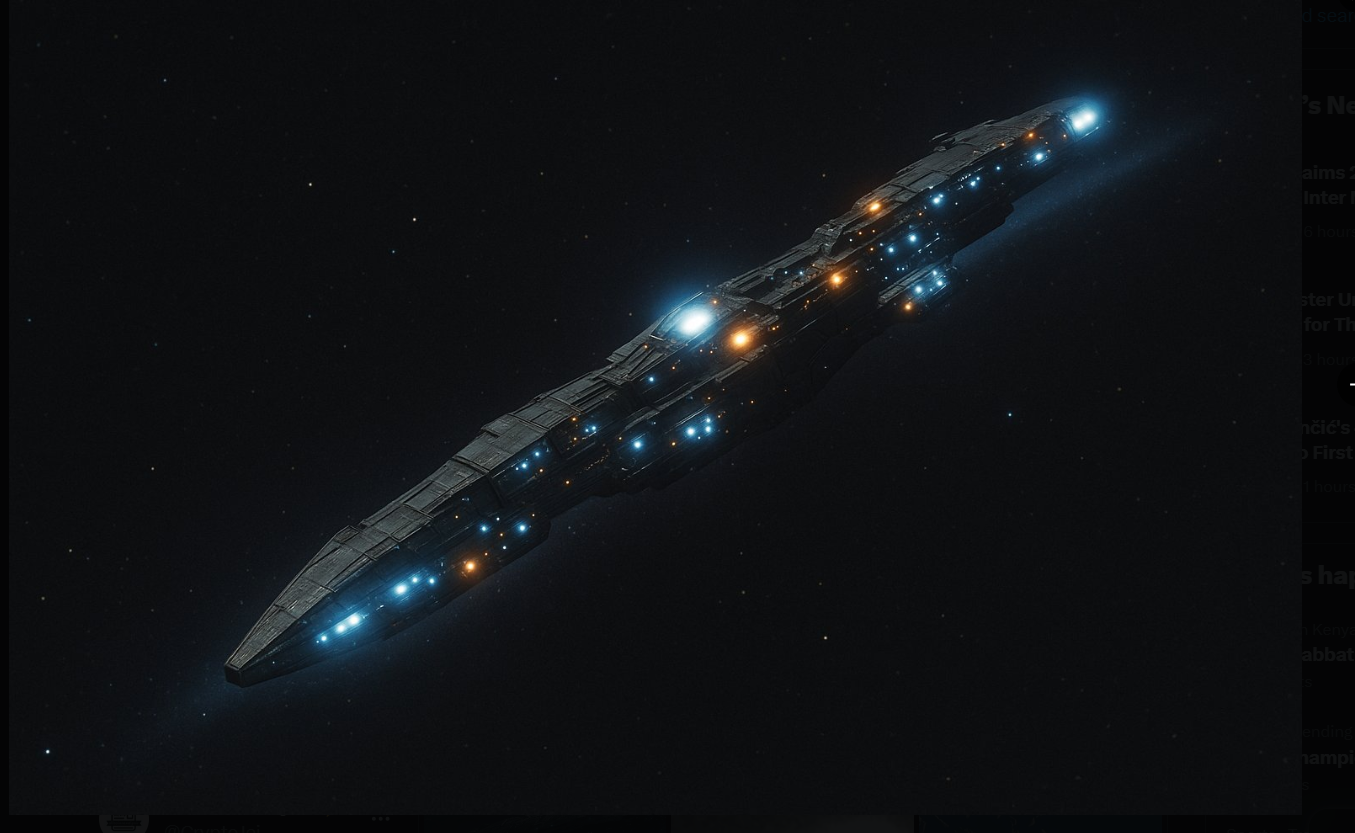3I/ATLAS: The Interstellar Visitor Stirring Science—and Speculation
When astronomers discovered 3I/ATLAS in July 2025, they knew they were witnessing something extraordinary. It was only the third confirmed interstellar object ever observed entering our Solar System—following ʻOumuamua in 2017 and 2I/Borisov in 2019. But what sets 3I/ATLAS apart isn’t just its alien origin—it’s the growing storm of data, mystery, and speculation surrounding it.
A Visitor Older Than the Solar System
Named after the Asteroid Terrestrial-impact Last Alert System (ATLAS) survey telescope in Chile, which first detected it, 3I/ATLAS travels on a sharply hyperbolic trajectory with an eccentricity above 6. That orbit means it’s not bound to the Sun; it’s a traveler from deep interstellar space that will eventually leave our Solar System forever.
Early analyses suggest it could be over seven billion years old, making it potentially older than our Sun. Observations from Gemini North and NASA’s Infrared Telescope Facility indicate faint outgassing activity—evidence of volatile ices like water sublimating as it nears the Sun. Unlike ʻOumuamua’s puzzling stillness, 3I/ATLAS behaves more like a traditional comet, trailing a soft halo of gas and dust.
For scientists, this is a treasure. Studying its spectrum and structure offers a once-in-a-lifetime look at material formed around another star—revealing whether our Solar System’s chemistry is universal or unique.
Scientific Goldmine Meets Public Frenzy
The excitement, however, hasn’t stopped at science. Within days of its discovery, social media and alternative researchers began spinning theories about 3I/ATLAS being more than just an inert piece of rock and ice.
Popular author and theorist Billy Carson II (@4biddnKnowledge) claimed that the object appeared to be “reversing thrust using reverse burn” as it approached the Sun, calling it “the greatest anomaly in human history.” The claim fueled widespread online discussion, with some comparing 3I/ATLAS to ʻOumuamua, which also displayed unexplained acceleration.
At the same time, Surajit Ghosh (@surajit_ghosh2) shared that astrophysicist Avi Loeb—known for his controversial theories on ʻOumuamua’s possible artificial nature—had allegedly contacted NASA requesting information and photographs of 3I/ATLAS. Loeb, according to Ghosh, claimed NASA possessed unreleased imagery and had yet to respond to his inquiries, hinting at possible secrecy surrounding the object. He reportedly praised the European Space Agency (ESA) for being “far more transparent.”
ESA’s JUICE Mission Joins the Search
Adding legitimacy to the growing buzz, ESA announced that its JUICE (Jupiter Icy Moons Explorer) spacecraft will attempt to observe 3I/ATLAS during its trajectory through the inner Solar System. Originally launched in April 2023 to study Jupiter and its icy moons, JUICE carries an advanced suite of cameras, spectrometers, and particle sensors—making it capable of capturing high-quality data from a distant object like 3I/ATLAS.
According to ESA’s update, JUICE’s current orbital position offers it “perhaps the best chance” among any active spacecraft to collect firsthand data on an interstellar visitor. Scientists hope it can help determine the object’s composition, rotation, and true nature—answers that telescopes on Earth may not be able to provide.
Meanwhile, NASA has quietly activated its Planetary Defense Network to keep track of the object’s movement. Although routine for potentially hazardous near-Earth bodies, the activation raised eyebrows among those already convinced that 3I/ATLAS might be something extraordinary.
Amateurs and Agencies Alike Are Watching
Reports from amateur astrophotographers have added fuel to the fire. One image, circulated widely online, allegedly showed a perfectly spherical object instead of the expected elongated light streak typical of comets. Enhanced versions of the image led some users to claim it looked “too symmetrical” to be natural—though professional astronomers caution that image artifacts and overprocessing can easily create such effects.
The attention reached global institutions when the United Nations’ International Asteroid Warning Network (IAWN) confirmed it had initiated official tracking of 3I/ATLAS. It’s the first interstellar body ever monitored under a UN-coordinated planetary defense protocol—a symbolic milestone for humanity’s growing readiness to detect and observe cosmic visitors.
A Cosmic Mystery in Real Time
Despite the swirl of conspiracy theories and extraterrestrial speculation, the scientific consensus remains grounded: 3I/ATLAS is an ancient comet-like object from another star system. Yet, its behavior continues to challenge expectations. Its brightness varies unpredictably, its spectral data shows anomalies, and its path offers a rare opportunity to study galactic debris up close.
Whether natural or not, 3I/ATLAS has already achieved something remarkable—it’s made the world look up again. As it loops around the Sun and begins its outbound journey back into the void, scientists, enthusiasts, and dreamers alike are united by the same question:
What exactly is 3I/ATLAS—and what secrets from beyond the stars does it carry?




